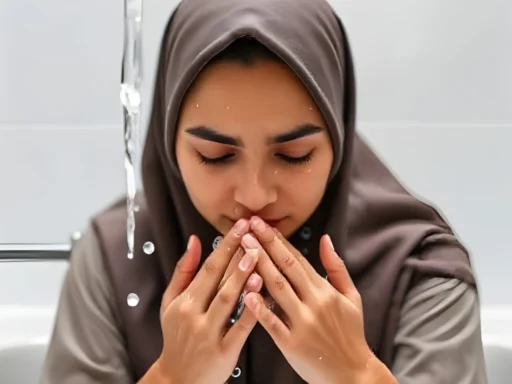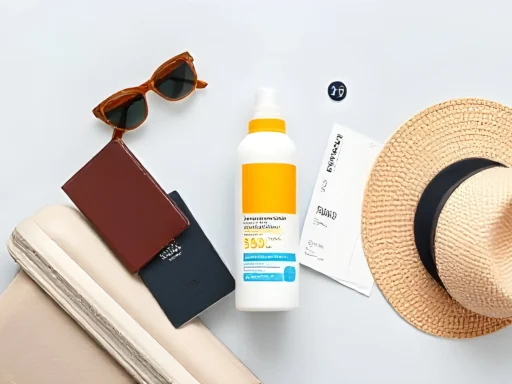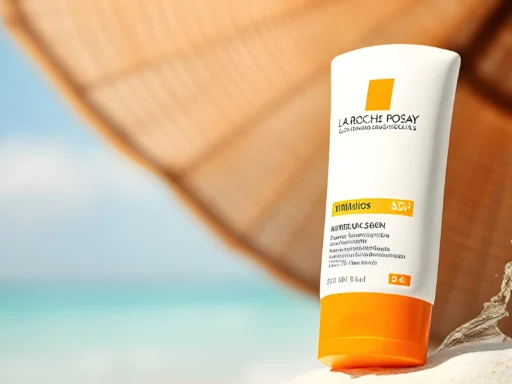Everyone loves a sunny day by the beach or pool, but protecting your skin is essential to avoid sunburn and long-term damage. Sunscreen is your best defense against harmful UV rays, but timing matters — how long to wait to swim after putting on sunscreen is a key question for proper protection. So, how long should you wait to swim after applying, putting on, and allowing sunscreen (including SPF) to absorb for optimal waiting time and safe swimming after sunscreen application? The answer is crucial for proper protection.
This guide covers everything you need to know about sunscreen application, waiting times, and reapplication tips. Whether you’re a parent, fitness lover, or beach enthusiast, these insights will help you stay safe while enjoying the sun!
- How to Apply Sunscreen before Swimming
- How Long to Wait to Swim After Putting on Sunscreen?
- Factors Affecting Sunscreen Waiting Time
- Reapplying Sunscreen: Why and How Often?
- Special Considerations for Different Swimming Environments
- Post-Swim Sunscreen Care
- Conclusion
- Frequently Asked Questions (FAQs)
How to Apply Sunscreen before Swimming
Step-By-Step Sunscreen Application Guide
Proper sunscreen application lays the foundation for effective UV protection. Here’s a simple guide to make sure you’re doing it the right way:
Start With Clean, Dry Skin
Begin by ensuring your skin is clean and dry before applying sunscreen. This helps the product absorb more effectively and ensures even coverage. Dirt, oil, or moisture on the skin can interfere with how the sunscreen adheres and protects you, reducing its effectiveness.
Use the Right Amount
To get proper protection, you need to use enough sunscreen—about 1 ounce, roughly the size of a shot glass, for your entire body. Using too little will leave areas exposed to harmful UV rays. Make sure to reapply the same amount after swimming or sweating for full coverage.
Apply Evenly
Smooth sunscreen evenly over all exposed skin using broad, sweeping motions. Pay extra attention to commonly missed areas like your ears, the back of your neck, your hands, and the tops of your feet. Uneven application can lead to patchy coverage and sunburn.
Don’t Forget Your Face
Your face needs extra care, so use a sunscreen specifically formulated for facial use. These products are often lighter and less greasy, minimizing the risk of irritation or clogged pores. Apply evenly and don’t miss areas like your nose, hairline, or lips.
Give It Time to Absorb
Sunscreen needs time to form a protective barrier on your skin, so apply it at least 15-20 minutes before going outside. This ensures you’re fully protected when exposed to sunlight or water. Rushing this step can leave your skin vulnerable to UV damage.
Best Practices for Enhanced Protection
- Always apply sunscreen indoors or under shade for better absorption.
- Use a water-resistant sunscreen for swimming and other water activities to ensure longer-lasting protection.
- Check expiration dates—using expired sunscreen reduces its effectiveness.
How Long to Wait to Swim After Putting on Sunscreen?
The million-dollar question! How long after applying sunscreen can you swim? The general procedure is to wait for 15 and 20 minutes after applying sunscreen or before going to the water. This gives the sunscreen enough time to absorb into your skin, creating an effective barrier against UV rays.
If you’re wondering, How long does sunscreen need to absorb before swimming? keep in mind that this time can vary depending on the type of sunscreen you’re using. Non-water-resistant sunscreen typically takes longer to set, while water-resistant sunscreen is designed to combat water exposure much more effectively.
SPF Matters
High-SPF sunscreen doesn’t necessarily need longer absorption time but does provide enhanced protection for longer. Whether you’re using SPF 30 or SPF 50+, always stick to the 15-20 minute rule.
Factors Affecting Sunscreen Waiting Time
Several factors play a role in determining how long to wait before swimming after sunscreen application:
Sunscreen Type and SPF
Water-Resistant Sunscreen
Designed to last longer during water exposure, these formulas need around 15 minutes to set properly. However, they still need reapplication after extended swimming sessions.
High SPF vs. Low SPF
SPF ratings don’t effect waiting times but dictate how long you’re guarded. SPF 50+ offers stronger protection than SPF 30, but both require proper application.
Environmental Influences
- Pool chlorine can break down sunscreen faster, requiring more frequent reapplication.
- Saltwater doesn’t impact sunscreen as severely as chlorine but can still erode it during prolonged exposure.
Skin Type and Activity Intensity
- Individuals with sensitive or oily skin may need sunscreen specifically formulated for their skin type to ensure effective absorption.
- Intense water activities, like surfing or swimming laps, can wear off sunscreen quicker than casual swimming or lounging.
Reapplying Sunscreen: Why and How Often?
Why Reapplication Is Crucial
Even the best sunscreens lose effectiveness over time due to water exposure, sweat, and towel-drying. Sunscreen reapplication ensures continuous protection throughout the day.
Guidelines for Reapplication
- Reapply every 2 hours, even if you’re not swimming.
- After swimming, always reapply sunscreen immediately—especially if it’s been more than 40–80 minutes, depending on the water-resistance rating.
Practical Tips for Reapplication
1
Dry your skin completely before reapplying. Sunscreen adheres better to dry skin.
2
Use spray or roll-on sunscreens for easy application when on the go.
Special Considerations for Different Swimming Environments
Pool vs. Sea
Pool
Chlorine breaks down sunscreen faster, reducing its effectiveness. Reapply every 40-60 minutes, especially after swimming. Choose water-resistant options formulated to stay intact in chlorinated water.
Sea
Saltwater and abrasive sand strip sunscreen off the skin. Rinse off salt and sand with fresh water before reapplying. Look for sunscreens designed for beach environments to withstand these conditions better.
Tailored Recommendations
1
Use reef-safe, biodegradable sunscreen when swimming in the sea to protect marine life.
2
For pools, choose sunscreen designed to withstand chlorinated water.
Post-Swim Sunscreen Care
Why Additional Application is Vital
After swimming, your sunscreen layer may no longer provide adequate protection due to water exposure. Even water-resistant sunscreens can lose effectiveness over time, especially after towel-drying. Applying an additional layer ensures your skin is fully protected and ready for prolonged sun exposure.
Removing Residual Sunscreen
The residue of sunscreen can get mixed with sweat, perspiration, or saltwater and hold the pores if not washed off properly. Use a gentle, non-stripping cleanser to effectively wash away any leftover product. This step is crucial for maintaining clear, healthy, and hydrated skin.
Maintain Skin Health Post-Exposure
Swimming can dry your skin from sunburn and chlorine irritations. Aloe or hyaluronic acid lotions restore your skin’s moisture, which would help soothe it back to its original state. This step repairs the skin barrier and helps restore the moisture that has been lost in order to keep the skin healthy and soft.
Conclusion
To sum it up:
- How long to wait to swim after putting on sunscreen? Wait 15–20 minutes to ensure optimal absorption and protection.
- Reapply sunscreen every 2 hours and immediately after swimming (or toweling dry).
- Adjust your sunscreen practices depending on environmental factors like pool chlorine or saltwater.
By following these simple steps, you can enjoy a safe and sunburn-free swim, whether you’re at the beach, pool, or your favorite outdoor spot.
Now that you know the ins and outs of sunscreen application and swimming, it’s time to put these tips into practice. Protect your skin, and enjoy every sunny day!
Frequently Asked Questions (FAQs)
You should wait 15–20 minutes after applying sunscreen before swimming. This allows the sunscreen to properly absorb into your skin and form a protective barrier.
It is not recommended to go into the water immediately after applying sunscreen. Waiting at least 15–20 minutes ensures that the sunscreen has adhered to your skin, providing effective protection against harmful UV rays.
Not necessarily. The typical recommendation is to wait 15–20 minutes, though some experts might suggest up to 30 minutes for maximum absorption, depending on the type of sunscreen used.
To ensure optimal protection, allow sunscreen to dry and set for at least 15–20 minutes before getting wet or sweating. This helps create a consistent protective layer on your skin.






